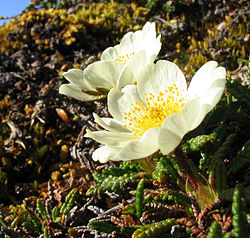Lessons from the past
New research results reported in Australia have re-emphasized the importance of understanding climates of the distant past. Researchers at the Australian National University in Canberra have compared ice cores from a New Zealand and Greenland glaciers, finding that the cooling in the Younger Dryas, a period of abrupt cooling about 13 000 years ago, began about 1000 years later in the Southern Hemisphere, which apparently warmed while the north was cooling and escaped the worse effects of the ensuing ice age. Previously, this event has been hypothesized to have been a global effect.
understanding climates of the distant past. Researchers at the Australian National University in Canberra have compared ice cores from a New Zealand and Greenland glaciers, finding that the cooling in the Younger Dryas, a period of abrupt cooling about 13 000 years ago, began about 1000 years later in the Southern Hemisphere, which apparently warmed while the north was cooling and escaped the worse effects of the ensuing ice age. Previously, this event has been hypothesized to have been a global effect.
The 'spin' on the news article has been that Australia can escape a 'new ice age' or, appealing to some of the more unsavory characteristics of Australian response to refugees, may face the threat of climate refugees from the northern hemisphere. These takes are silly, and undermine the seriousness and potential implications of the results. To be fair, though, the last article linked does contain a fair bit of science background and the silly emphasis is not the fault of the scientists involved, but rather the reportage...
These results suggest that an asymmetric response is possible. I would suspect that this results may play some role in resolving the apparent paradoxical responses in the polar ice, with the record low Arctic ice melt this past boreal summer while the Antarctic recorded its greatest areal extent of sea ice. A repeated claim of the doubters and Deniers has been that it can't be global warming, because the responses of the two poles are different. This research should deflate that line of reasoning to some degree; clearly there can be an asymmetric response.
These results also highlight the importance of the study of paleoclimate. This field provides an insight into the mechanisms of climate change. How does it proceed? What are the important factors? We probably cannot use the Younger Dryas as a direct analogy to our current crisis; each climate change event (now or in the past) likely has its own signature as a result of the particular forcing which drives it and the state of the climate when it happens. The forcing of the Younger Dryas is not really known although it is suspected that a shutdown of the thermohaline circulation in the North Atlantic was the culprit. Recent hypotheses suggest that an asteroid of comet impact was involved triggering the event. Regardless of the cause, large number of mammals went extinct in North America about this time.
Humankind faces enormous trials ahead, whether through climate change or other environmental degradation (or both!). As noted in this editorial from ScienceAlert:
It is time to admit how little we know and face the risks of planetary degradation – this goes way beyond climate change. Biodiversity isn’t just birds, primates and whales; it is planetary function and resilience. In fact, in a changing world, we should be finding ways to increase resilience not reducing it. Under climate change and a growing population we face a crisis of food security and resource management. Instead of “muddling through” we need an urgent program to critically review our conceptual foundations, the data requirements for adequate monitoring, the methods for data analysis and evaluation, and the information needs of communities and institutions for adaptive management.
Praemonitus praemunitus -- Forewarned is forearmed. We need all the information we can get to successfully navigate our future challenges.



No comments:
Post a Comment